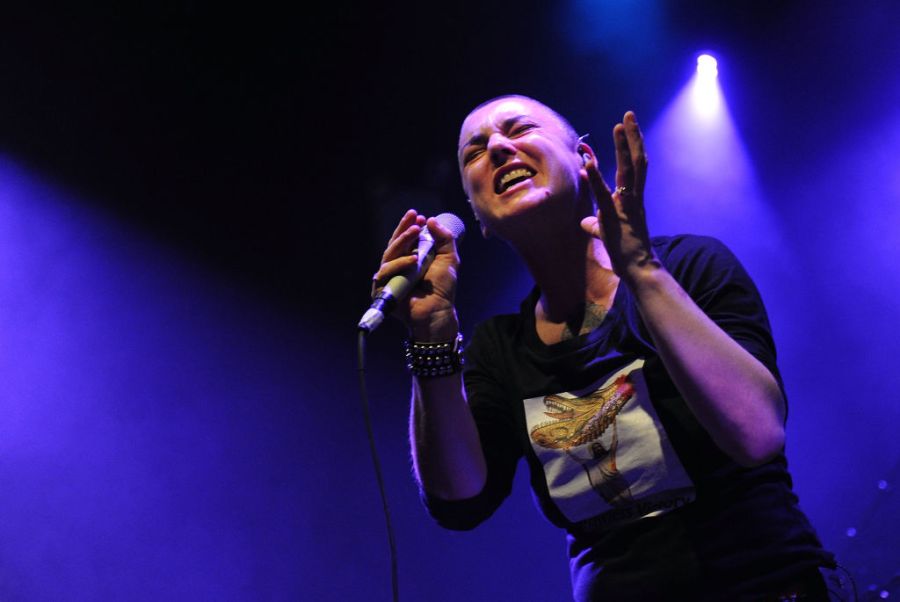Sinéad O’Connor fought for hip-hop justice
She’s known for “Nothing Compares 2 U,” but she also wrote a powerful protest anthem following the shooting of Colin Roach, a Black man.
When hip-hop needed a friend, they got one.
Sinéad O’Connor.
After the shooting death of an unarmed Black man, a voice used song to speak against the injustice.
Sinéad O’Connor.

The Irish singer died Wednesday in London at the age of 56. Her body was found in a private home, The New York Times reported. There was no cause of death immediately released. “The death is not being treated as suspicious,” according to a police statement.
O’Connor never shied away from controversy, stood up for what she believed, and shared the most painful aspects of her life.
She infamously tore up a photo of Pope John Paul II during a “Saturday Night Live” performance in 1992. She told Oprah Winfrey in 2007 she had bipolar disorder and, in a Facebook post a decade later, said she suffered from mental health issues. Then, in 2022, her 17-year-old son, Shane, died by suicide.
Her public persona, and everything often reported, doesn’t address her relationships with Black music, musicians, or how a song about a shooting might be one of the greatest protest songs ever.
Early in her career, in 1988, she worked with MC Lyte on “I Want Your Hands (On Me),” a song that peaked at No. 77 on the British charts. The lyrics said, in part.
I want your hands on me
What I want, give me
You know I wanna please you
What I wanna do to you
But her career exploded in 1990, due to a Prince song and a terrible tragedy.
Her album “I Do Not Want What I Haven’t Got,” contained a cover of Prince’s “Nothing Compares 2 U.” O’Connor turned the tune into a haunting power ballad about lost love. Her throaty voice and phrasing, especially how she pulls back when singing the word “nothing,” turned the song into a worldwide hit that spent 13 weeks on the Billboard charts and held the top position for one week.
I know that living with you baby was sometimes hard
But I’m willing to give it another try
Nothing compares
Nothing compares to you
Prince wrote the song for one of his ’80s side projects, “The Family,” but it never caught on. It took O’Connor’s unique voice – a mix of powerful vibrato, range and sweetness — to make the song a worldwide hit.
Also that year, she released the song “Black Boys on Mopeds,” an anthem protesting police brutality in England. She wrote the song for Colin Roach, who died of a bullet wound inside a London police station in 1983. His death spurred protests but not the reform citizens demanded.
The lyrics for “Black Boys on Mopeds” read, in part:
England’s not the mythical land of Madame George and roses
It’s the home of police who kill black boys on mopeds
And I love my baby and that’s why I’m leaving
I don’t want him to be aware that there’s
any such thing as grieving.

While she never mentioned Roach by name, the inside album jacket features a photo of his family with the handwritten words, “God’s place is the world but the world is not God’s place.”
(In 2016, American singer-songwriter Shea Rose covered “Black Boys on Mopeds” as her own indictment of the social climate in the United States).
Beyond her social justice stance, O’Connor gained huge props when, in 1991, she told the National Academy of Recording Arts & Sciences, which sponsors the Grammys, she would not accept any award the group might give her, making her the first artist to refuse a Grammy if she had won.
She was just 24.
“I believe that our purpose is to inspire and, in some way, guide and heal the human race, of which we are all equal members,” the letter said in part. O’Connor did win a Grammy, for best alternative music performance.
O’Connor was upset at what she described as injustices in the music industry, and she was right. By the 1990s, hip-hop had made it into the American mainstream, with trailblazing acts like N.W.A., Grandmaster Flash and the Furious Five and Salt-N-Pepa already making their mark. But in 1991, the Grammys didn’t present some musical categories important to Black artists on live TV.
Her stance galvanized the music world and inspired Black musicians.
Public Enemy, nominated for best rap performance by a duo or group for the album “Fear of a Black Planet,” boycotted the event. The group was upset that only “major” awards made it on the primetime telecast.
The group, signed to Russell Simmons’ Def Jam records, supported Simmons when he criticized the Grammys as continuing “the same old broken-record snub of inner-city contributions to the music industry,” the New York Times reported.
Living Colour, one of the best rock acts of its time, won for best hard rock performance for its album, “Time’s Up.” Lead guitarist Vernon Reid wore a shirt with O’Connor’s photo.
When news of her death broke, some of the most prominent Black musicians and actors paid their respects via social media.
Ice-T wrote on Twitter: Respect to Sinead. She stood for something … Unlike most people…. Rest Easy..
Janelle Monáe had a simple message, also on Twitter: “Fight the real enemy”- Sinead O’Connor
Chuck D. wrote: Rest In Beats and PowEr Sinead O Connor who always Brought The Noise.
While O’Connor’s music career may have waned after its height in the 1990s, her profound contributions to social justice issues and her work with Black musicians should undoubtedly form the enduring essence of her legacy.
TheGrio is FREE on your TV via Apple TV, Amazon Fire, Roku, and Android TV. Please download theGrio mobile apps today!
More About:News



